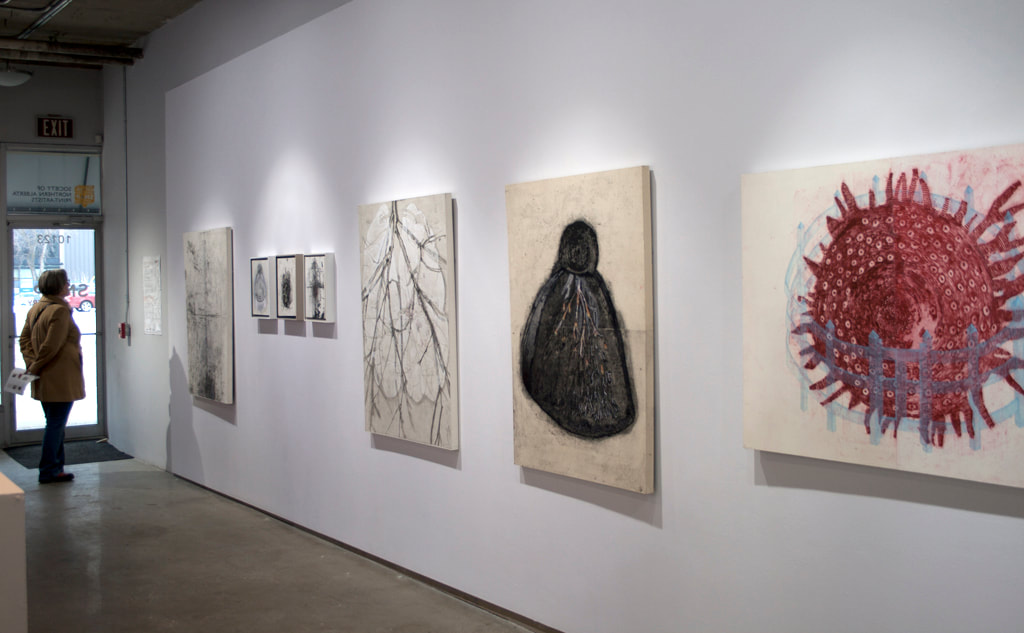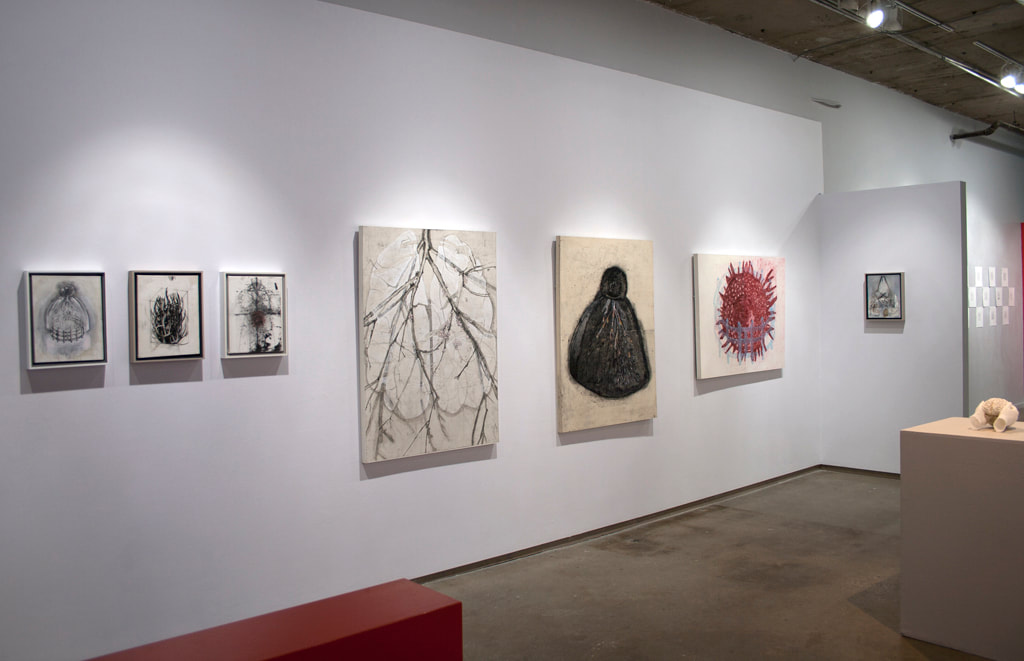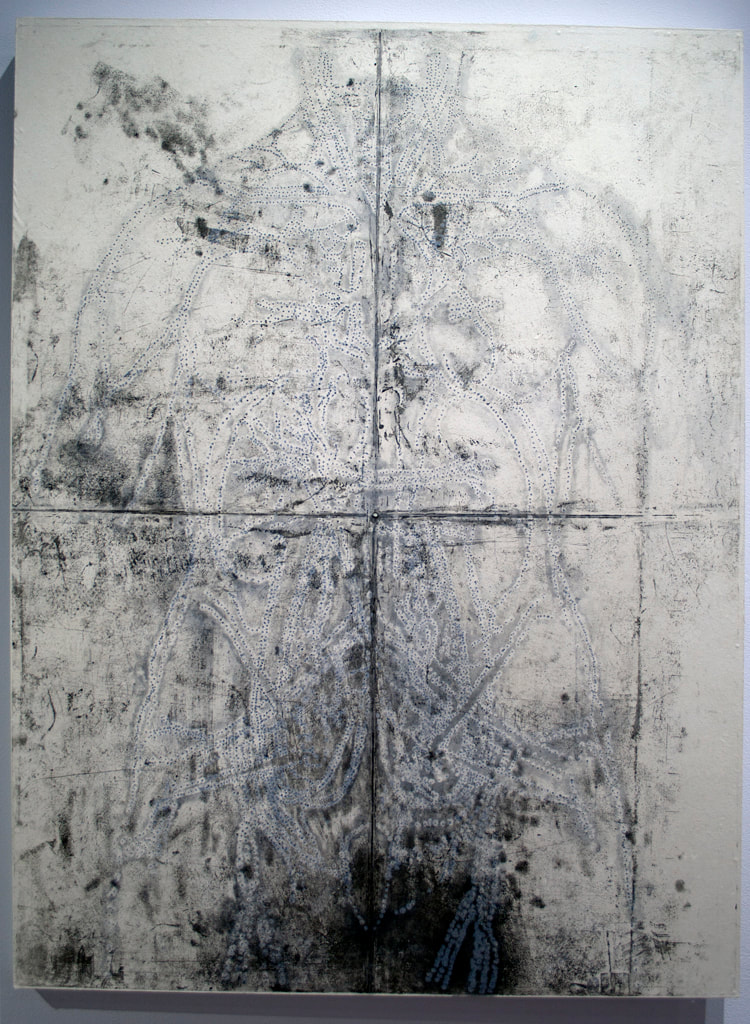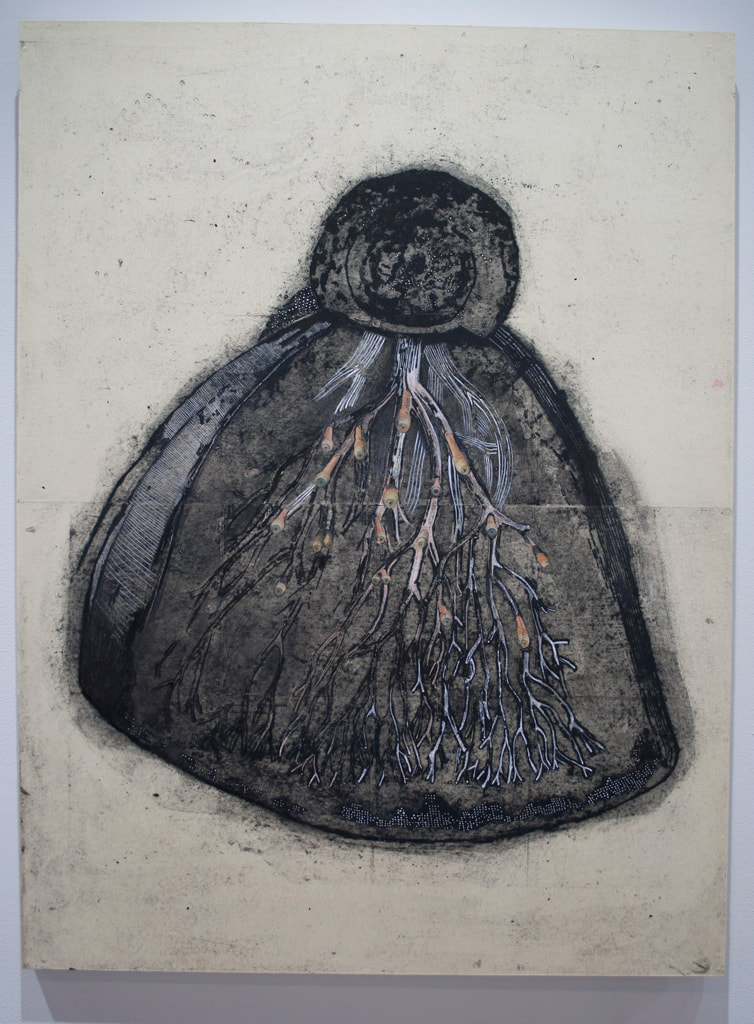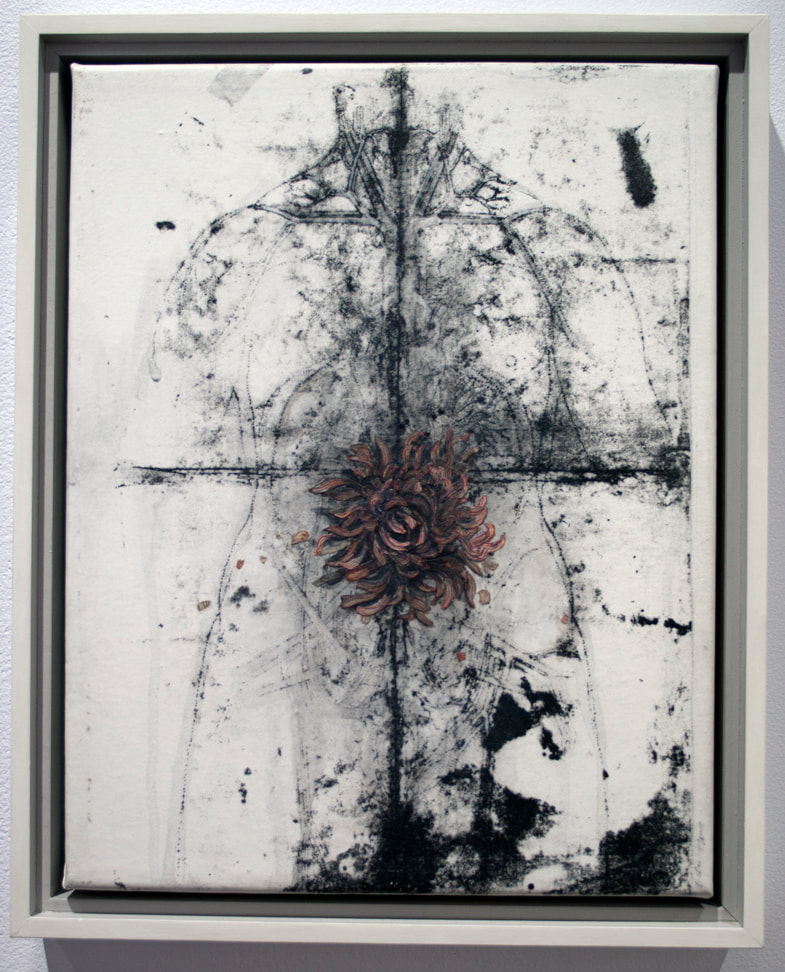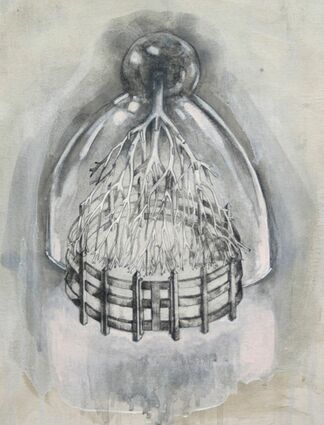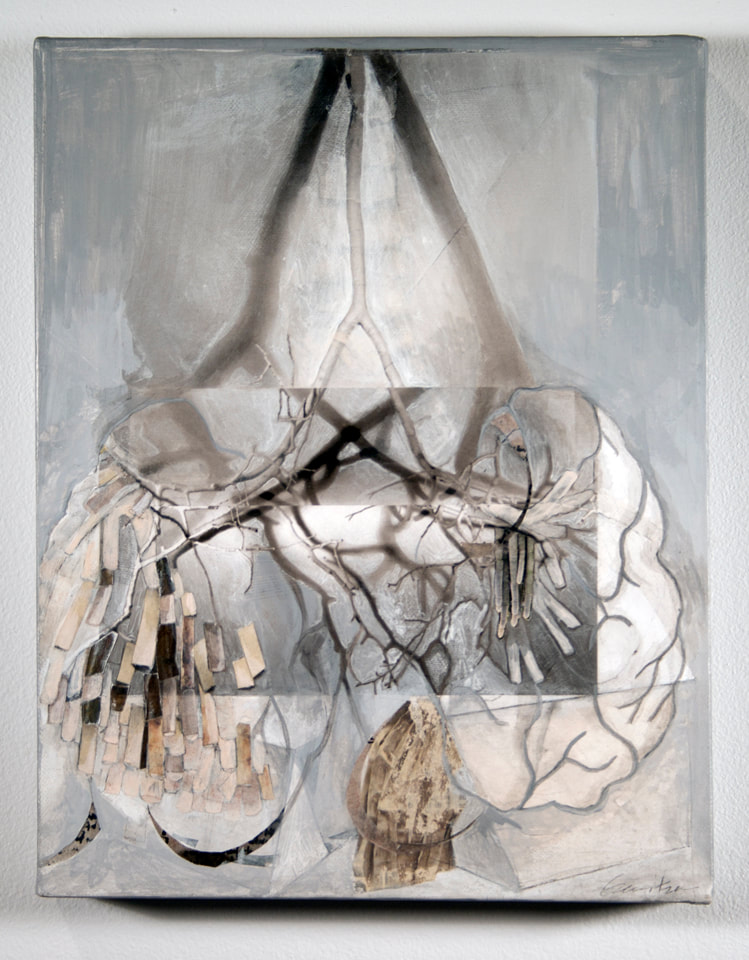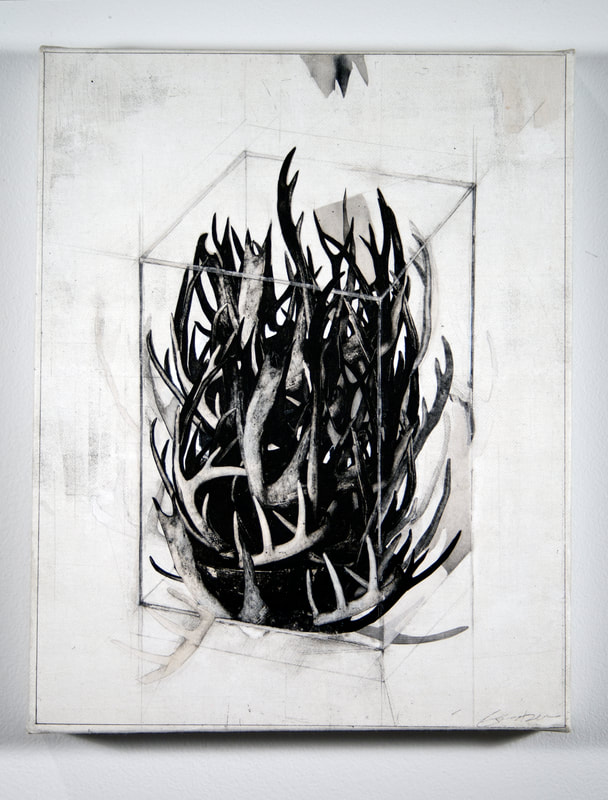Exhibition, November 2018
BRAINS AND BREASTS: Omitted Anatomies: HELEN GERRITZEN AND MARILENE OLIVER, SNAP Gallery, Edmonton, Alberta, Canada
Article in VUE Weekly
The Edmonton author and poet Wendy McGrath has written a poem inspired by the pieces from the exhibition called What Leo Forgot: A Chrysanthemum of Guts.
BRAINS AND BREASTS: Omitted Anatomies: HELEN GERRITZEN AND MARILENE OLIVER, SNAP Gallery, Edmonton, Alberta, Canada
Article in VUE Weekly
The Edmonton author and poet Wendy McGrath has written a poem inspired by the pieces from the exhibition called What Leo Forgot: A Chrysanthemum of Guts.
diseases peculiar to women (enclosure), 2018, collagraph, collage and acrylic ink on honen and mulberry on board, (h) 36” x (w) 48” x (d) 1”
The large blood-red form is inspired by an anatomical illustration of a mammary gland from the circa 1940’s medical text “Diseases Peculiar to Women.” Encircling the female breast is the enclosure, a structure taken from the last scene in “The Unicorn Tapestries.” The "heavenly enclosure", described as a symbol of Mary’s perpetual virginity, is constructed with delicate hand-drawn lines of blue ink that contrast sharply with the painterly marks of the "bodily" collagraph. The enclosure--"as a human invention of boundaries"*--simultaneously protects and reveals.
*Art historian and Professor Lianne McTavish writing about the enclosure in her essay Reciprocities: Istanbul and Edmonton.
The large blood-red form is inspired by an anatomical illustration of a mammary gland from the circa 1940’s medical text “Diseases Peculiar to Women.” Encircling the female breast is the enclosure, a structure taken from the last scene in “The Unicorn Tapestries.” The "heavenly enclosure", described as a symbol of Mary’s perpetual virginity, is constructed with delicate hand-drawn lines of blue ink that contrast sharply with the painterly marks of the "bodily" collagraph. The enclosure--"as a human invention of boundaries"*--simultaneously protects and reveals.
*Art historian and Professor Lianne McTavish writing about the enclosure in her essay Reciprocities: Istanbul and Edmonton.
diseases peculiar to women (da Vinci), 2018, etching, collagraph, graphite and collage on Mulberry on board, (h) 48” x (w) 36” x (d) 1”
Leonardo da Vinci’s delicate rendering of a woman’s torso:Dissection of the principal organs and arterial system of a woman became the starting point of this contemporary work. It was the drawing’s verso that captured my attention: the way the pin-pricks on the back of the drawing created the form of the body and its anatomy, and the way that the folds in the paper becomes a division imposed on the body. I did the same to a sheet of copper as da Vinci had done in the cartoon: I physically folded the copper in four and redrew the women’s body in individual pricks; each one physically etched into and through the plate.The additional drawing, printed in white, contrasts with the history of the etching and reminds us of the tenuous corporeal and symbolic “body” being represented here. And at her centre is a pearl.
Leonardo da Vinci’s delicate rendering of a woman’s torso:Dissection of the principal organs and arterial system of a woman became the starting point of this contemporary work. It was the drawing’s verso that captured my attention: the way the pin-pricks on the back of the drawing created the form of the body and its anatomy, and the way that the folds in the paper becomes a division imposed on the body. I did the same to a sheet of copper as da Vinci had done in the cartoon: I physically folded the copper in four and redrew the women’s body in individual pricks; each one physically etched into and through the plate.The additional drawing, printed in white, contrasts with the history of the etching and reminds us of the tenuous corporeal and symbolic “body” being represented here. And at her centre is a pearl.
diseases peculiar to women (mammary), 2018, collagraph, collage, acrylic ink and graphite on kitakata on board, (h) 48” x (w) 36” x (d) 1”
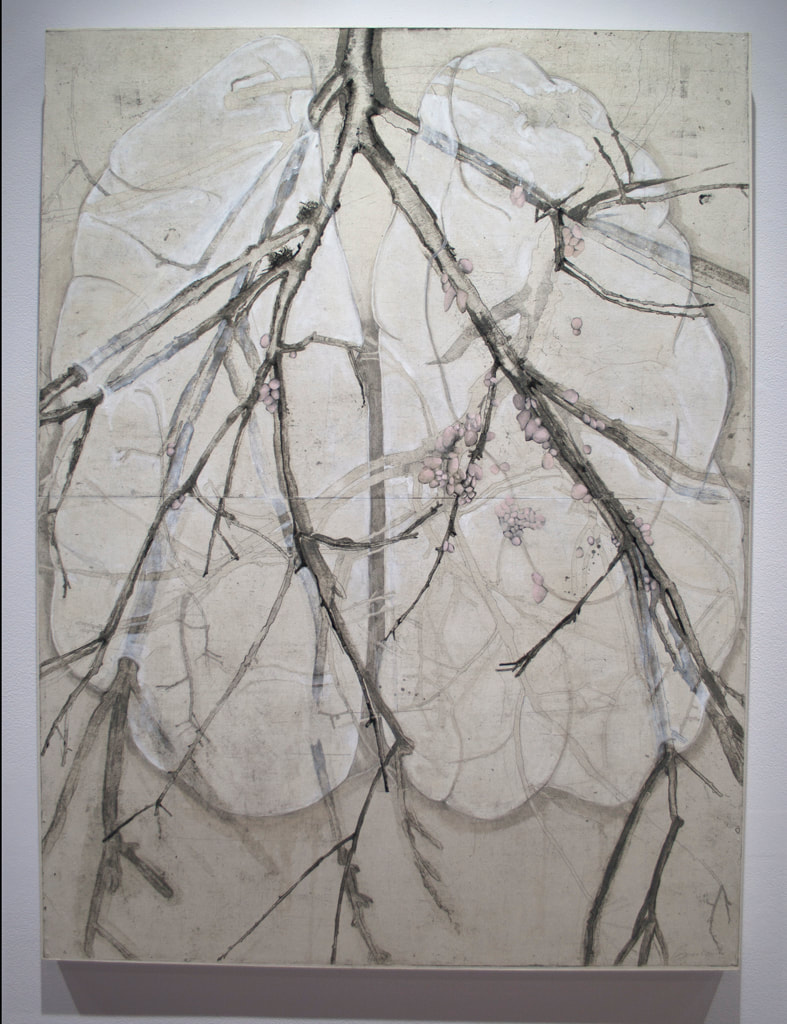
diseases peculiar to women (lungs), 2018, etching, collagraph, collage, acrylic ink and graphite on honen on board, (h) 48” x (w) 36” x (d) 1”
In my work, I play with symbol and myth while using objects to evoke visual metaphors relating to the female body. Referencing the myth of Daphne and Apollo, here the tree branch symbolizes the trachea of Daphne at a moment of her transformation to a laurel tree. The lungs, the form taken from a 18thcentury woodcut from Japan, are painted in a milky white that contrasts with the clusters of pale pink sculptural forms that cling to the branches. Through the layers of drawing, exterior and interior form vacillate, responding to the brutal reality of the narrative—her body at the moment of its last breath.
In my work, I play with symbol and myth while using objects to evoke visual metaphors relating to the female body. Referencing the myth of Daphne and Apollo, here the tree branch symbolizes the trachea of Daphne at a moment of her transformation to a laurel tree. The lungs, the form taken from a 18thcentury woodcut from Japan, are painted in a milky white that contrasts with the clusters of pale pink sculptural forms that cling to the branches. Through the layers of drawing, exterior and interior form vacillate, responding to the brutal reality of the narrative—her body at the moment of its last breath.
|
From the enclosure series: blossom, 2018, lithograph (pronto plate), collage, graphite, acrylic ink on paper on stretched canvas, (h) 14” x (w) 11” x (d) 1 ½”
Blossom is a photo-based print of the original delicate renderingof a woman’s torso by Leonardo da Vinci. The image is, however, taken from the verso of the drawing, through which we experience the woman’s form and flesh through the cartoon pin-pricks and stains. A collage in the form of a chrysanthemum emerges from her anatomy. The Edmonton author and poet Wendy McGrath has written a poem on this work and the other pieces from the exhibition called What Leo Forgot: A Chrysanthemum of Guts. |
From the enclosure series: the bell jar, 2018, lithograph (stone), graphite, acrylic ink on paper on stretched canvas, (h) 14” x (w) 11” x (d) 1 ½”
Since 2012, I have worked on the “From the enclosure series…,” mixed media works that examine the female body’s long history as a repository of cultural, sexual, medical and religious meanings. In “the bell jar,” three elements are brought together as one: an anatomical illustration of a breast from the medical text “Diseases Peculiar to Women,” the glass bell jar inspired by Sylvia Plath’s novel of the same name, and the delicate round fence or enclosure that becomes the designated metaphorical place for this feminist examination. |
|
From the enclosure series: for an extended period of time, they raped me with their hands, 2012, digital print, collage, graphite, acrylic ink on paper on stretched canvas, (h) 14” x (w) 11” x (d) 1 ½”
|
From the enclosure series: box of pandora, 2013, photo etching, collage and graphite on paper on stretched canvas, (h) 14” x (w) 11” x (d) 1 ½”
|

